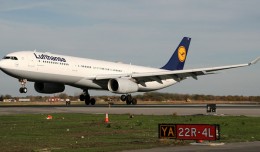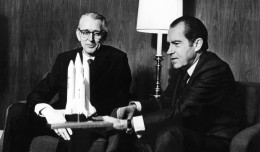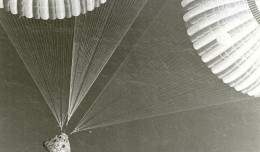2012 – Malev, the national airline of Hungary, halts operations after 66 years of service.
2012 – The CEO of Micron Technology, Steve Appleton, is killed when his single-engine Lancair crashes at Boise Airport.
2005 – Kam Air Flight 904, a Boeing 737-200 (EX-037), crashes into the Pamir Mountains during a snowstorm while on approach to Kabul from Kerat, Afghanistan, killing all 96 passengers and 8 crewmembers.
1998 – The Cavalese cable car disaster: A US Marine Corps EA-6B Prowler jet on a low-altitude training flight slices through a cable supporting a ski gondola in Italy’s Dolomite mountains, sending 20 people aboard a tram plunging 250 feet to their deaths. The pilot and navigator would be charged with involuntary manslaughter and negligent homicide in US military court, but would be acquitted despite exceeding the recommended speed and descending much lower than the 1,000ft minimum altitude for the area. They would, however, be court martialed again for destroying a videotape of the flight, in which they would be found guilty, sentenced to six months in prison and discharged from the Marines. In 1999 the Italian government would draw up a settlement package for the families of the victims in which each would receive $1.9 million, 75% of which would be paid by the US under NATO regulations.
1995 – Space Shuttle Discovery launches on mission STS-63, with the first ever female shuttle pilot, Eileen Collins, at the wheel.
1994 – Space Shuttle Discovery launches on STS-60, the first mission of the Shuttle-Mir Program and the first to carry a Russian cosmonaut.
1984 – Space Shuttle Challenger lifts off from Cape Caneveral on mission STS-41B, Challenger‘s fourth launch and the 10th shuttle mission overall. The mission would feature the first ever untethered spacewalk and the crew would deploy two communications satellites.
1982 – A Mil Mi-26 helicopter lifts a 57 metric ton load to an altitude of 2,000 meters (6,500 feet) setting a new world record.
1966 – Luna 9, an unmanned Soviet spacecraft, makes the first successful landing on the Moon.
1961: – The US Air Force Strategic Air Command commences Operation Looking Glass, a continuous airborne alert intended to provide continuity of nuclear command in the event that the USSTRATCOM Global Operations Center at Offut AFB, Nebraska, the Raven Rock Military Complex in Pennsylvania and the National Military Command Center in the Pentagon were destroyed. EC-135 Looking Glass aircraft were was in the air 24 hours a day for over 29 years until July 24, 1990, several months after the fall of the Berlin Wall. The alert remains in existence but is no longer continuously airborne. In 1998, Looking Glass duties were transferred to US Navy E-6B aircraft.
1959 – The Day the Music Died: Buddy Holly, Ritchie Valens, and J. P. “The Big Bopper” Richardson are killed when the 1947 Beechcraft Bonanza 35 they had chartered from Dwyer Flying Service to fly from Clear Lake, Iowa to Moorhead, Minn. crashes about five minutes after takeoff. The inexperience of the young pilot, who was also killed, along with poor weather conditions would be blamed for the crash.
1945 – The US Army’s Eighth Air Force launches Operation Thunderclap: 1,000 B-17 bombers raid Berlin, killing 3,000 and leaving 120,000 homeless.
1934 – Lufthansa launches the first regular transatlantic airmail service, flying between Berlin and Rio de Janeiro.







